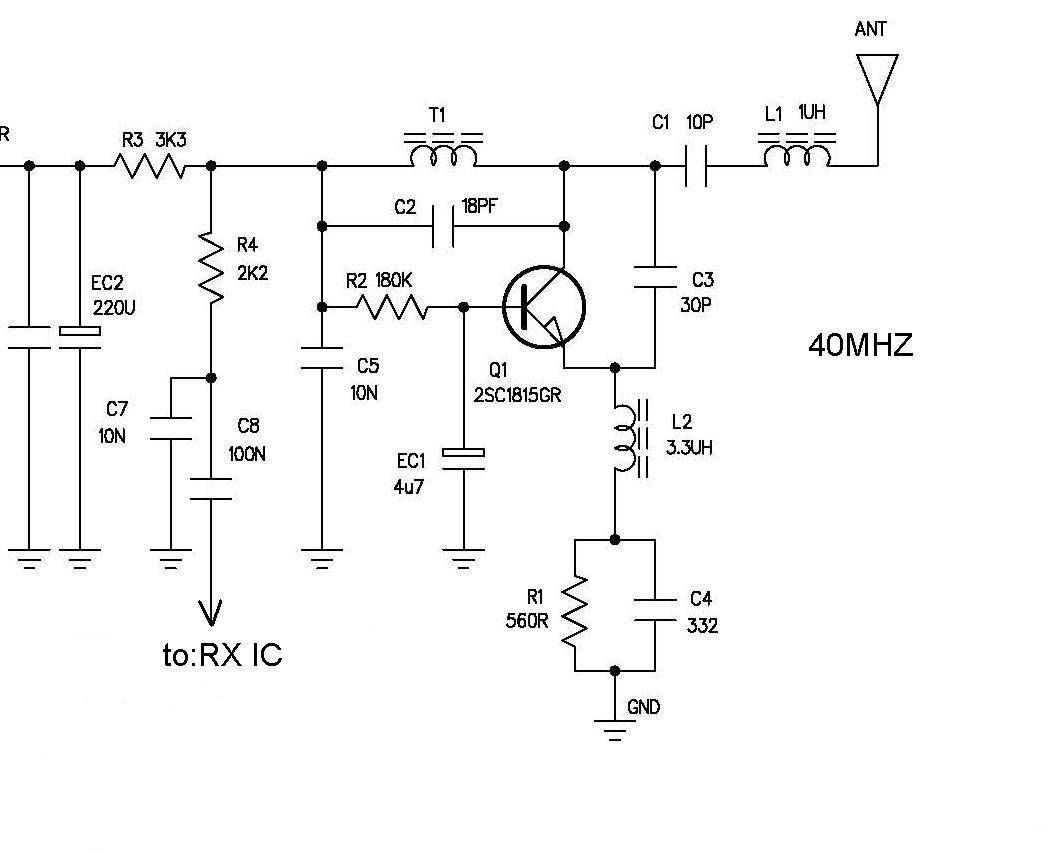Super Regenerative Detection Receiver: The super regenerative detection circuit is actually a high frequency oscillator controlled by intermittent oscillation. This high frequency oscillator uses a capacitor three-point oscillator, and the oscillation frequency is consistent with the emission frequency of the transmitter. Intermittent oscillation (also known as quenching and oscillating) is generated during the oscillation of high-frequency oscillations, which in turn controls the oscillation and pause of the high-frequency oscillator. The frequency of the intermittent (quenching) oscillation is determined by the parameters of the circuit (generally from one hundred to several hundred kilohertz). This frequency is selected low, the circuit has better anti-interference performance, but the receiving sensitivity is lower: conversely, the frequency is selected higher, the receiving sensitivity is better, but the anti-interference performance is worse. It should be based on the actual situation.
The super regenerative detection circuit has a high gain. When the control signal is not received, due to the interference of external spurious signals and the thermal turbulence of the circuit itself, a unique noise is generated, called super noise, and the frequency range of this noise. It is between 0.3~5kHz, which sounds like a "sand" sound like water. When there is no signal, the super noise level is very high, and after filtering and amplifying, the noise voltage is output, and the voltage is used as a control signal of a state of the circuit to make the relay pull or open (depending on the state of the design).
When a control signal arrives, the circuit oscillates, super noise is suppressed, and the high frequency oscillator begins to oscillate. The speed of the oscillation process and the length of the interval are controlled by the amplitude of the received signal. When the amplitude of the received signal is large, the initial level is high, the oscillation process is established fast, the intermittent time of each oscillation is also short, and the obtained control voltage is also high; conversely, when the amplitude of the received signal is small, the obtained control voltage is also low. Thus, a low frequency voltage consistent with the control signal is obtained at the load of the circuit, and this voltage is another control voltage of the circuit state.

Rexroth Servo Motor Replacement
Rexroth Servo Motor Replacement technical advantages:
•Optional power-off brake protection
•High positioning accuracy, stable speed, improve production efficiency
•Easy to wire and lead out, reducing engineering difficulty and cost
•Highly integrated design, reducing installation complexity and saving space
•Customizable features in a variety of sports modes
•Provide application solutions and development kit support for various scenarios, shortening the user's development cycle
•Real-time fault monitoring and protection functions, including over-current, overload, over-voltage, under-voltage, overheating, overspeed, over-tolerance protection
Rexroth Servo Motor Replacement,Rexroth Servo Motor,Rexroth Servo Drive,Rexroth Servo Motor Repair
Kassel Machinery (zhejiang) Co., Ltd. , https://www.kasselservo.com